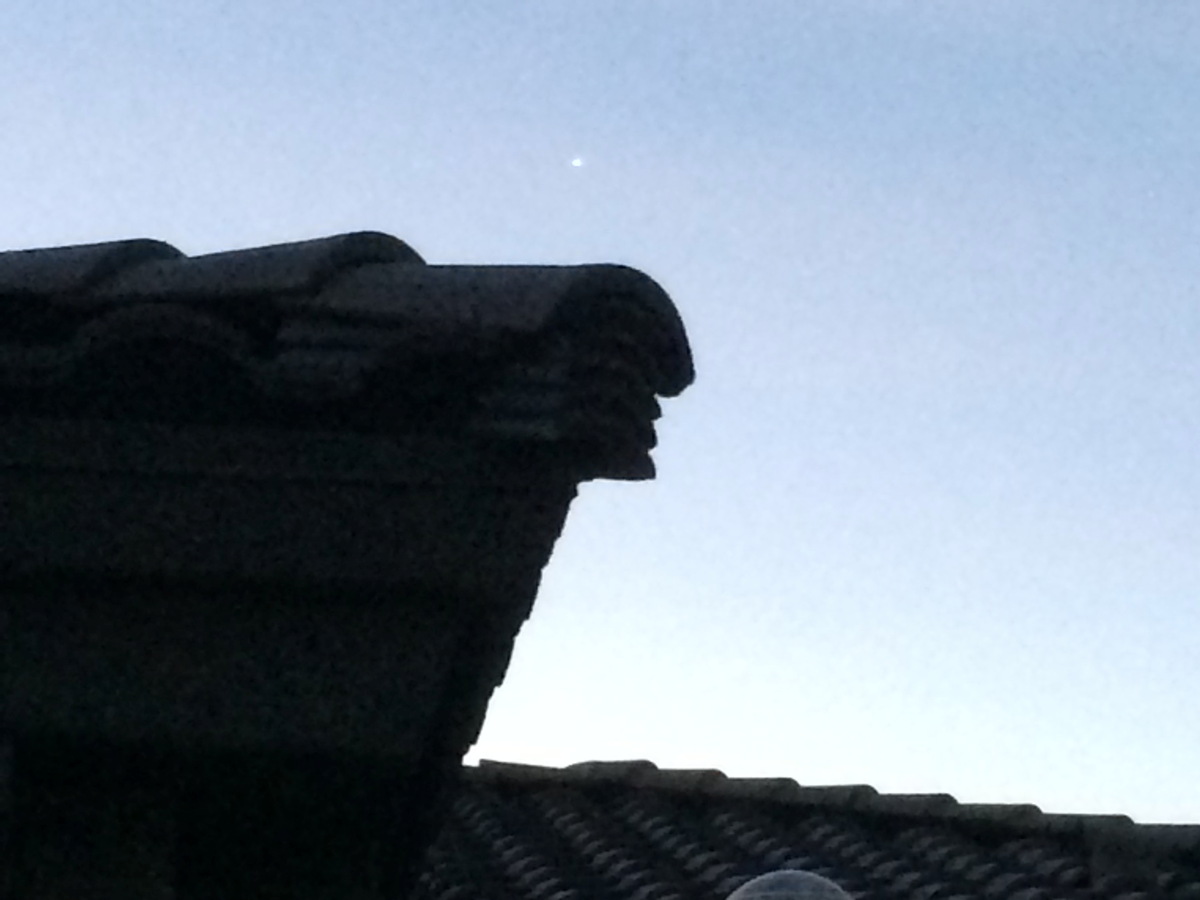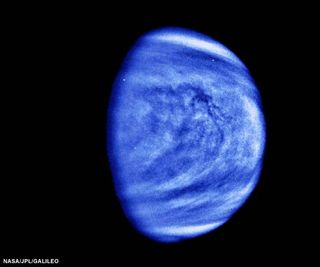Rare Sight: See Venus During the Day (Photo)

PHOENIX — One of the more amazing sights in our sky is the planet Venus. At its best, Venus is brighter than all other celestial objects except the sun and moon. Right now, the brilliant planet is so bright that you can actually see it in the daytime, if you know where to look.
Venus doesn't make any visible light of its own. It shines by reflecting sunlight. Right now, Venus is well up in the morning sky before sunrise, and any time this week, if the sky is clear, you'll have no trouble finding it. Just go out, look east. Venus will be the brightest thing you see. If you stretch your arms out, this "morning star" will be about two fists above the horizon as the sky begins to lighten.
By the time the sun rises, Venus will be reduced to a pale pinprick of light. The trick to seeing it during the day is to prepare. Here's what you do:
- Find out when sunrise occurs at your location.
- Head out about 15 to 20 minutes before sunrise and find Venus. It’ll be easy to spot.
- Put a house, fence, tree or other object between you and the sunrise, and sight Venus next to, under or over the object, so that you know exactly where it is.
- Go out again 5 to 10 minutes before sunrise and stand in the same spot, check your sighting. You might be surprised how far Venus has moved. Imagine where this movement will put Venus at sunrise.
- Wait for sunrise, and keep your eye on Venus. As the sun rises, you'll still have Venus in your sights.
As long as you know where to find it, you can theoretically find Venus until it sets in the late afternoon. Practically speaking this is hard to do if you’re not experienced. But no matter: If you spotted the planet just after sunrise, you're among the select few who've seen another world during the day. [Amazing Photos of Venus]
While you ponder our sister planet rising ahead of the sun, here are some facts about Venus and its orbit:
Venus and the sun rise because Earth is rotating. Both objects, as well as the other planets in our solar system, follow roughly the same path across our sky from east to west, an arc astronomers call the ecliptic.
Venus is closer to the sun than we are, so from our point of view, Venus never ranges very far from the sun. It is always either behind or in front of the sun (when we can't see it) or off to one side (when we can see it). When it’s off to one side, as it is now, Venus gets referred to as the evening star or the morning star, depending on which side of the sun it's on.
Get the Space.com Newsletter
Breaking space news, the latest updates on rocket launches, skywatching events and more!
Outer planets, like Mars or Jupiter, can be opposite the sun in our sky, and therefore overhead at night. Venus can never be overhead, and it’s never in our sky in the middle of the night.
Editor's note: If you snap an amazing photo of Venus, or any other night sky view, and you'd like to share it for a possible story or image gallery, please contact managing editor Tariq Malik at spacephotos@space.com.
Follow us @Spacedotcom, Facebook and Google+. Original article on Space.com.

Join our Space Forums to keep talking space on the latest missions, night sky and more! And if you have a news tip, correction or comment, let us know at: community@space.com.

Rob has been producing internet content since the mid-1990s. He was a writer, editor and Director of Site Operations at Space.com starting in 1999. He served as Managing Editor of LiveScience since its launch in 2004. He then oversaw news operations for the Space.com's then-parent company TechMediaNetwork's growing suite of technology, science and business news sites. Prior to joining the company, Rob was an editor at The Star-Ledger in New Jersey. He has a journalism degree from Humboldt State University in California, is an author and also writes for Medium.
Most Popular
